Long-duration X1.6 solar flare erupts from Region 3386; S1 – Minor radiation storm
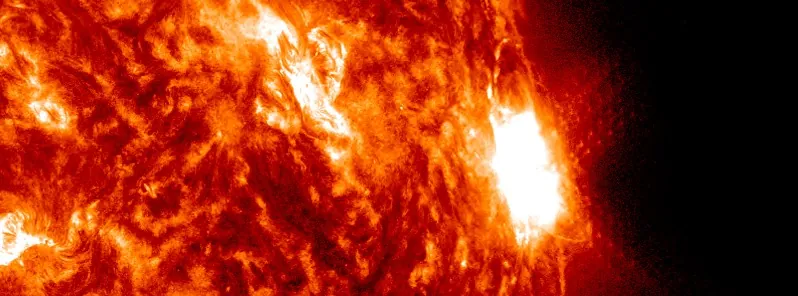
A major, long-duration solar flare measuring X1.6 erupted from Active Region 3386 (beta-delta) at 22:21 UTC on August 5, 2023. The event started at 21:45 and ended at 22:44 UTC.
The flare was associated with a Type II radio emission (estimated velocity 772 km/s), suggesting a coronal mass ejection (CME) was produced during the event.
The associated CME is not expected to be Earth-directed.
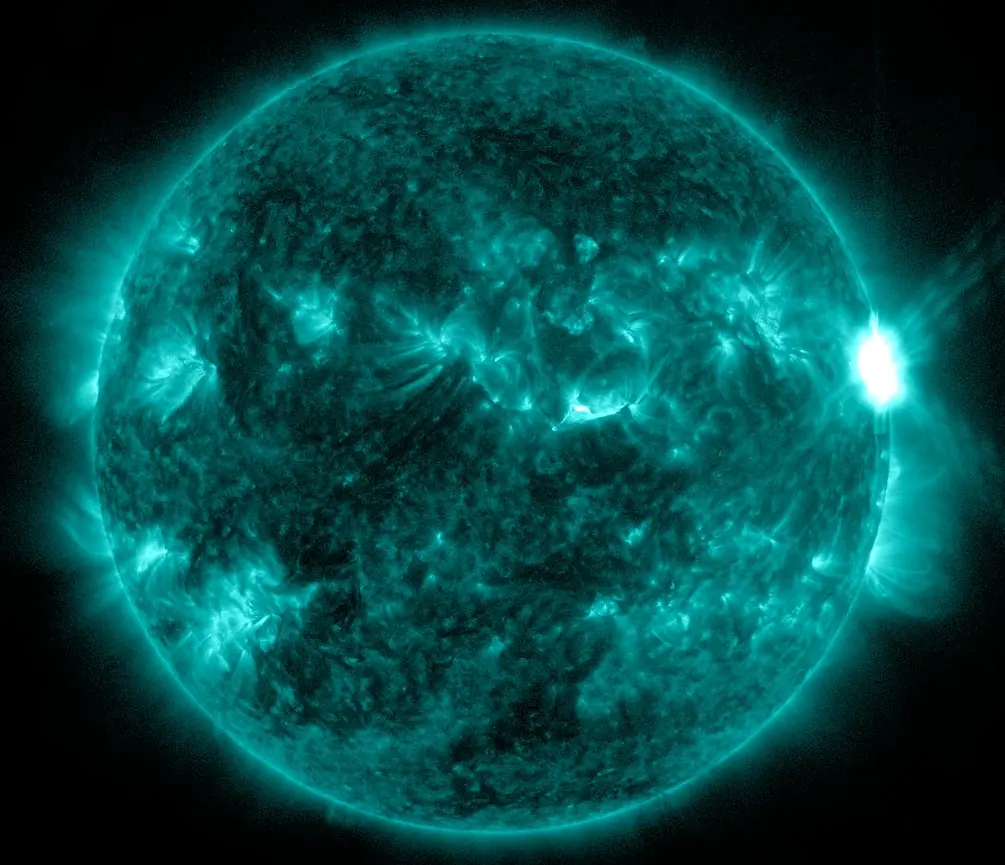
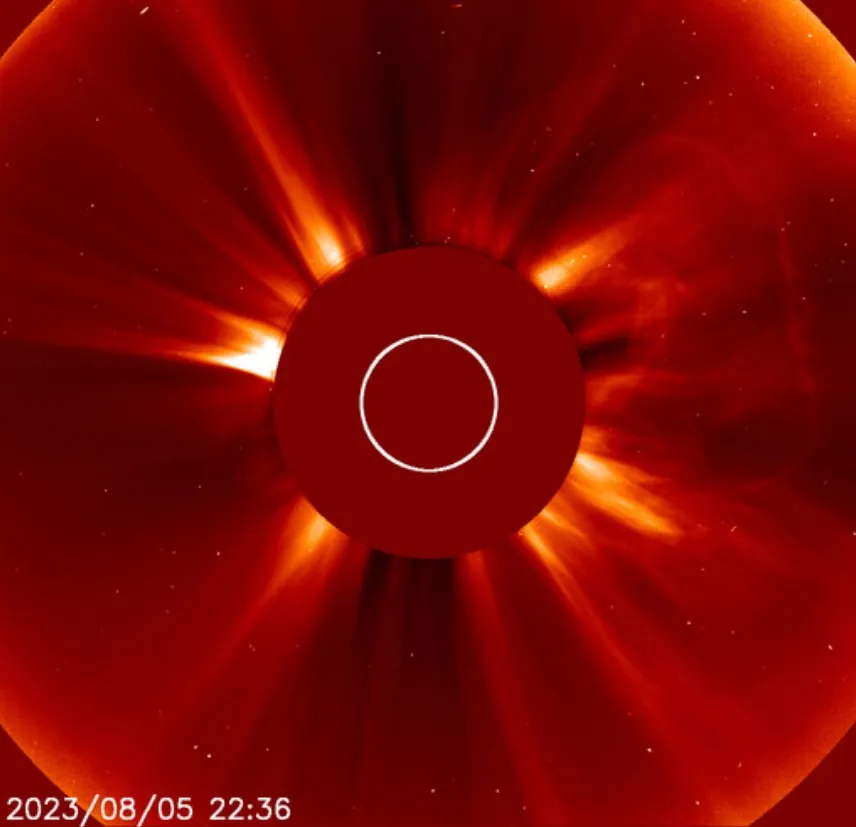
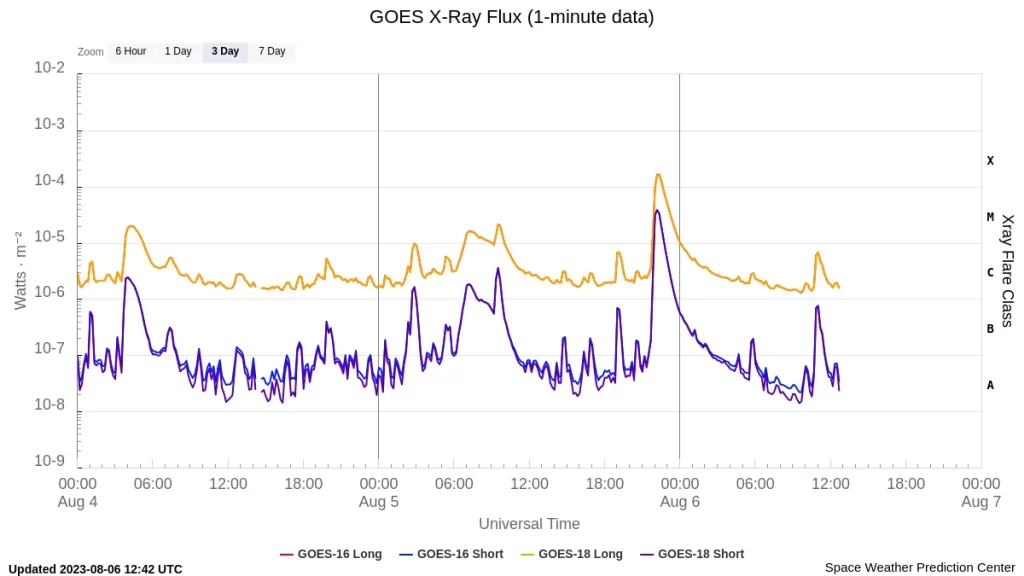
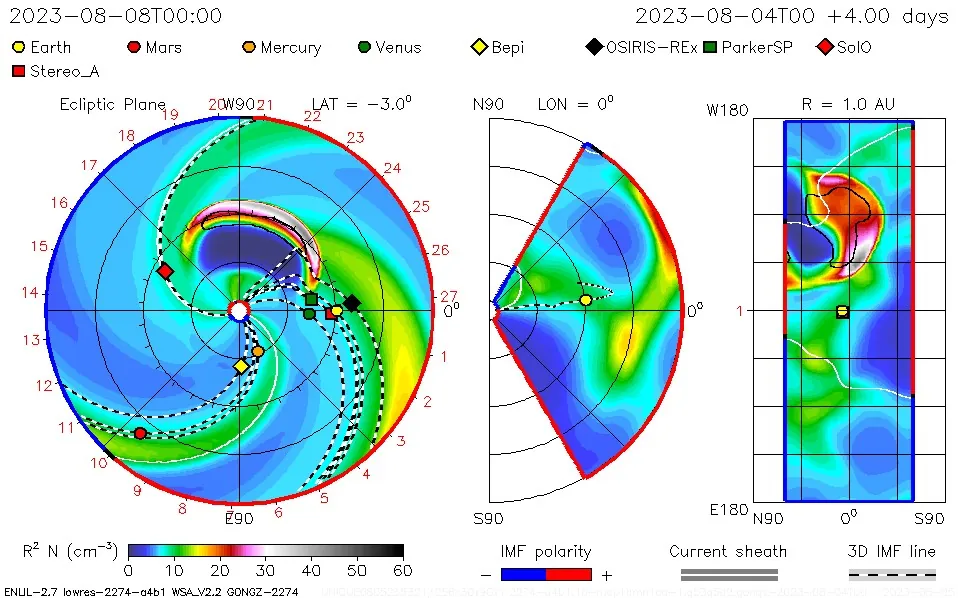
Radio frequencies were forecast to be most degraded over the Pacific Ocean, eastern Canada and parts of United States at the time of the flare.
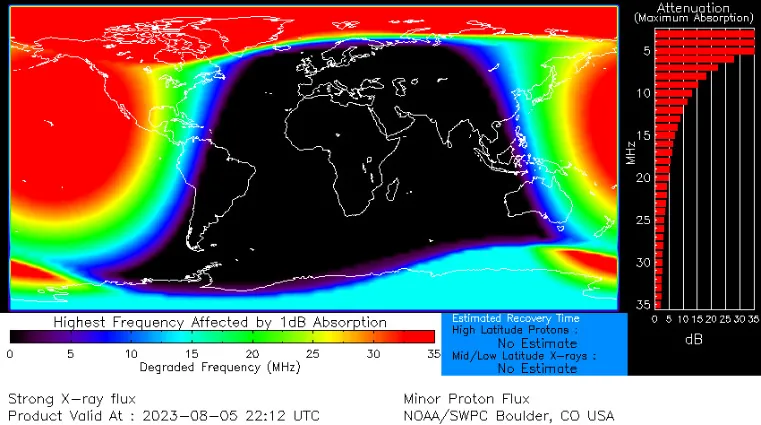
The same region was also responsible for a long-duration M1.6 solar flare at 07:18 UTC. A Type II radio emission (with an estimated velocity of 572 km/s) was associated with this event, too.
Coinciding with this flare was an approximate 19-degree filament eruption centered near S05W62. An associated CME became visible in LASCO C2 coronagraph imagery beginning at 07:00 UTC. The CME is expected to result in a glancing blow arrival to Earth early to midday on August 8.
Other notable activity during the day includes an M2.1 solar flare observed at 09:36 UTC from Region 3380, as well as several C-class flares from Region 3387.
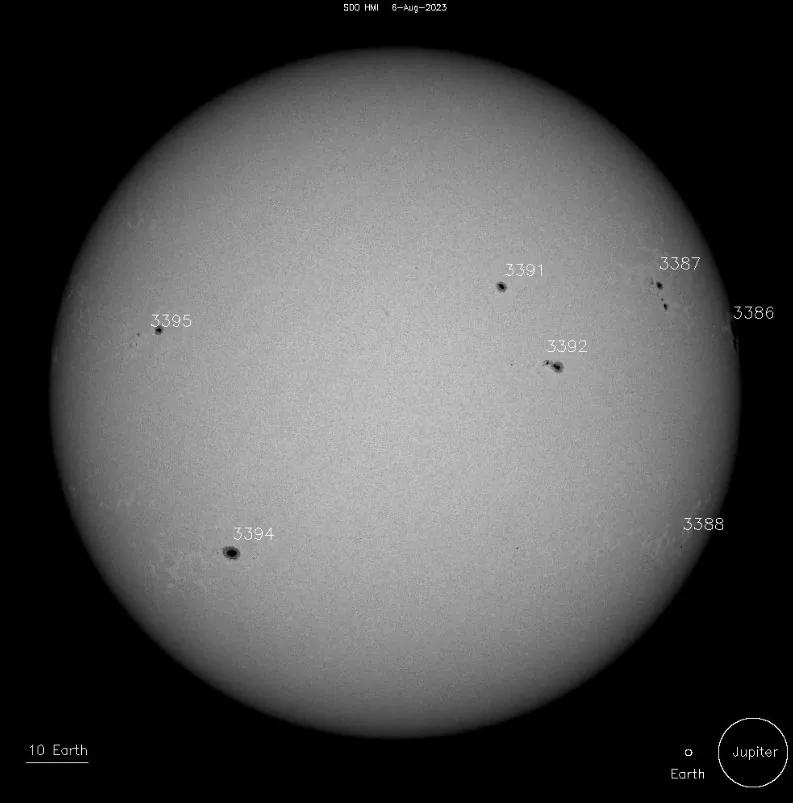
The greater than 10 MeV proton flux became elevated following a long-duration M1.6 flare. S1 – Minor storm conditions began at 11:15 UTC, reached a peak flux of 18.5 pfu at 17:45 UTC on August 5, and ended at 04:55 UTC on August 6. The greater than 2 MeV electron flux was normal to moderate levels.
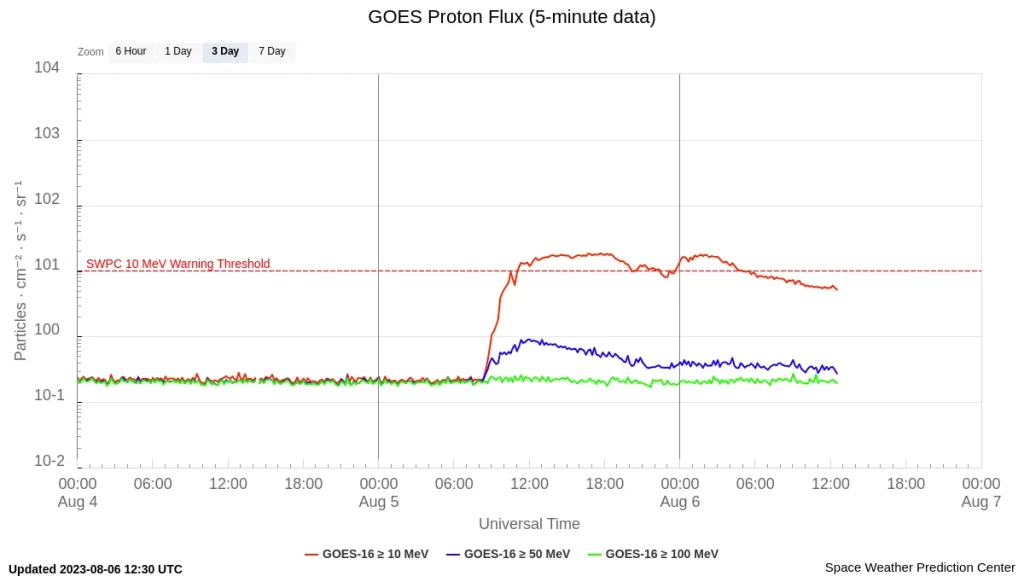
The CMEs produced on August 1 and 2 reached our planet at 02:53 UTC on August 5. The geomagnetic field responded with a G1 – Minor geomagnetic storm at 03:35 UTC. Geomagnetic K-index of 6 (G2 – Moderate geomagnetic storm) threshold was reached at 04:20 UTC, followed by G3 -Strong geomagnetic storm (K-index of 7) at 05:59 UTC. The conditions subsided by 07:21 UTC to G1 – Minor storm levels.
More M-class solar flares are expected through August 7, but there’s now just a slight change for an X-class flare. Activity is expected to decrease to a chance for M-class flares on August 8 with the departure of Region 3386.
The greater than 10 MeV proton flux is expected to remain enhanced, but below the S1 – Minor storm threshold through the remainder of August 6. There is a chance for S1 storms on August 7 with background levels expected to return on August 8.
Quiet and unsettled geomagnetic field levels are expected on August 6. Periods of active conditions are expected on August 7 due to the possible arrival of a CME from August 4. G1 – Minor storm levels are expected on August 8 due to the anticipated arrival of a CME from August 5.
References:
1 Forecast Discussion – Issued: 2023 Aug 06 1230 UTC – Prepared by the U.S. Dept. of Commerce, NOAA, Space Weather Prediction Center
Featured image credit: X1.6 solar flare on August 5, 2023. Credit: NASA SDO/AIA 304, The Watchers

Commenting rules and guidelines
We value the thoughts and opinions of our readers and welcome healthy discussions on our website. In order to maintain a respectful and positive community, we ask that all commenters follow these rules.